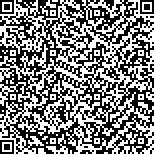下载中心
优秀审稿专家
优秀论文
相关链接
摘要

激光雷达通过发射激光能量和接收返回信号的方式,来获取高精度的森林空间结构和林下地形信息。全波形激光雷达通过记录返回信号的全部能量,得到亚米级植被垂直剖面;离散回波激光雷达记录的单个或多个回波,表示来自不同冠层的回波信号。星载激光雷达一般采用全波形或光子计数激光剖面系统,仅能获取卫星轨道下方的单波束或多波束数据,用于区域/全球范围的森林垂直结构及变化观测。机载激光雷达多采用离散回波或全波形激光扫描系统,能够获取飞行轨迹下方特定视场范围内的扫描数据,用于林分/区域范围的森林结构观测。地基激光雷达多采用离散回波激光扫描系统,获取以测站为中心的球形空间内扫描数据,用于单木/样地范围的森林结构观测。激光雷达单木因子估测方法可分为CHM单木法、NPC单木法和体元单木法3类。CHM单木法通过局部最大值识别树冠顶点,采用区域生长或图像分割算法识别树冠边界或树冠主方向,NPC单木法一般通过空间聚类或形态学算法识别单木,体元单木法在3维体元空间采用区域生长或空间聚类算法识别树冠。根据激光雷达冠层高度分布可以估测林分因子,冠层高度分布特征来自于离散点云或全波形。多时相激光雷达可用于森林生长量、生物量变化等监测,以及森林采伐、灾害等引起的结构变化监测。随着激光雷达技术的发展,它将在森林调查、生态环境建模等生产与科学研究领域中得到更为广泛的应用。
LiDAR can be used to obtain forest spatial structure and terrain under canopy with high precision by transmitting laser energy and receiving returned signals. Full waveform LiDAR is able to record whole energy of returned signal and characterize vegetation vertical profile with sub-meter. Discrete return LiDAR records single or multiple echoes from stratified canopies. Spaceborne LiDAR usually configures laser profiling system with full waveform or photo counting technique to acquire single or multiple beams data under satellite orbit for vertical structure or change observation of forest at regional or global scale. Airborne LiDAR often use laser scanning system with discrete return or full waveform technique to obtain scan data within special FOV under flight trajectory for structure measurements of forest at stand or regional scale. Terrestrial LiDAR mainly carry laser scanning system with discrete return technique to get scan data within spherical space centered at observing station for detecting vertical structure of individual trees or forest stand. Inversion methods of individual tree parameters may be group into three category including CHM-based, NPC-based and voxel-based methods. CHM-based methods recognize tree tops by local maximum algorithm, and detects crown edges or crown main direction by region growth or image segmentation. NPC-based methods distinguish individual trees by spatial clustering or morphology algorithm. Voxel-based methods identify tree crown by region growth or spatial clustering algorithm in 3D voxel space. Forest stand parameters can be estimated using individual tree based or canopy height distribution based method. The features of canopy height distribution may be extracted from point cloud or full waveform. Multiple temporal LiDAR can be used to monitor forest growth, biomass change, structure changes caused by deforestation or disaster. It will be widely used in the field of operating organization or scientific research such as forest inventory, ecosystem modelling, etc. as the development of LiDAR technique.

